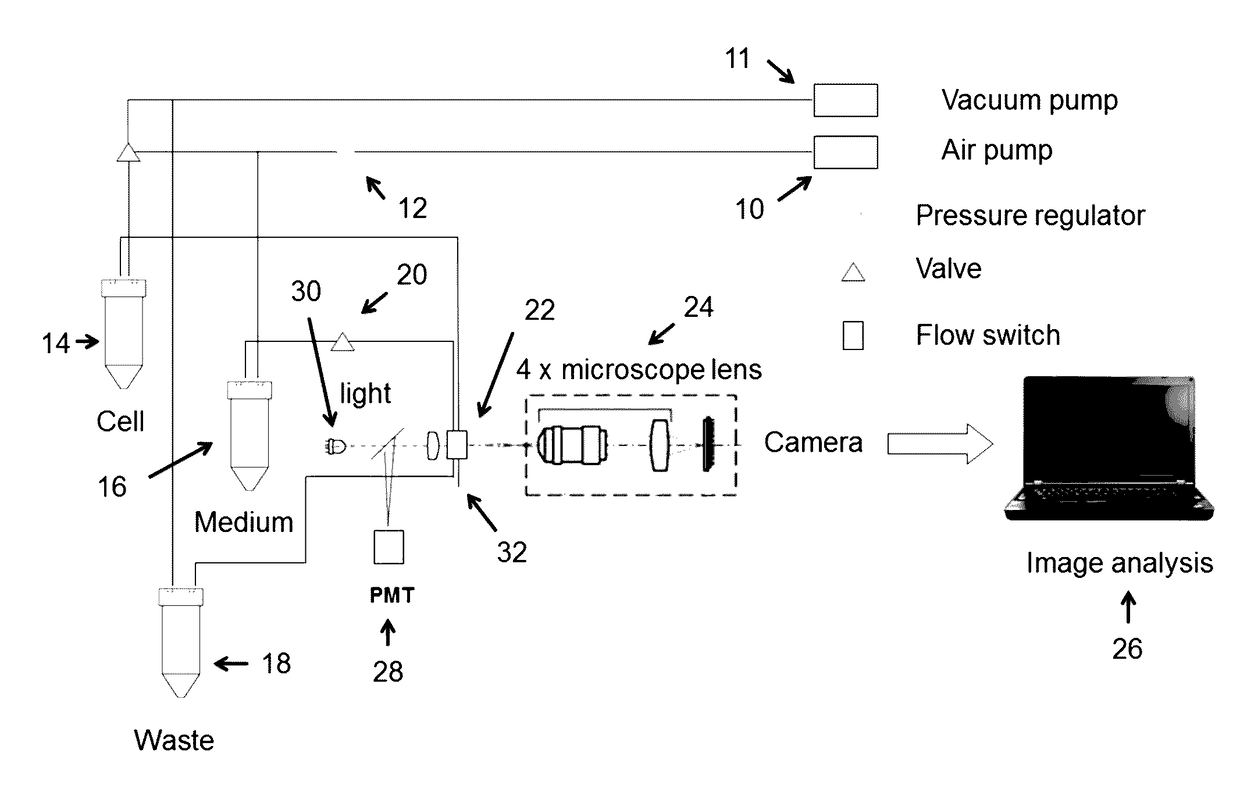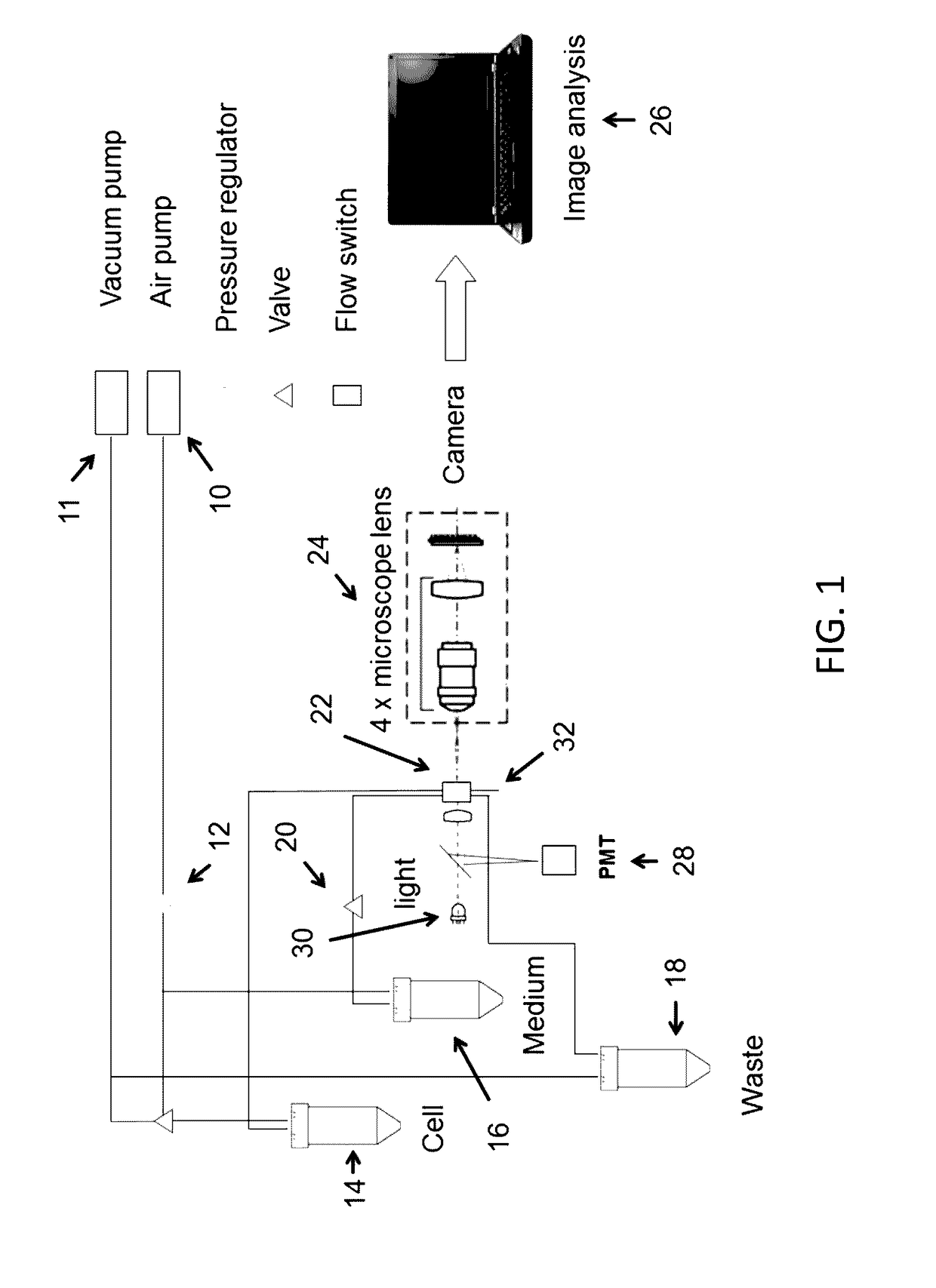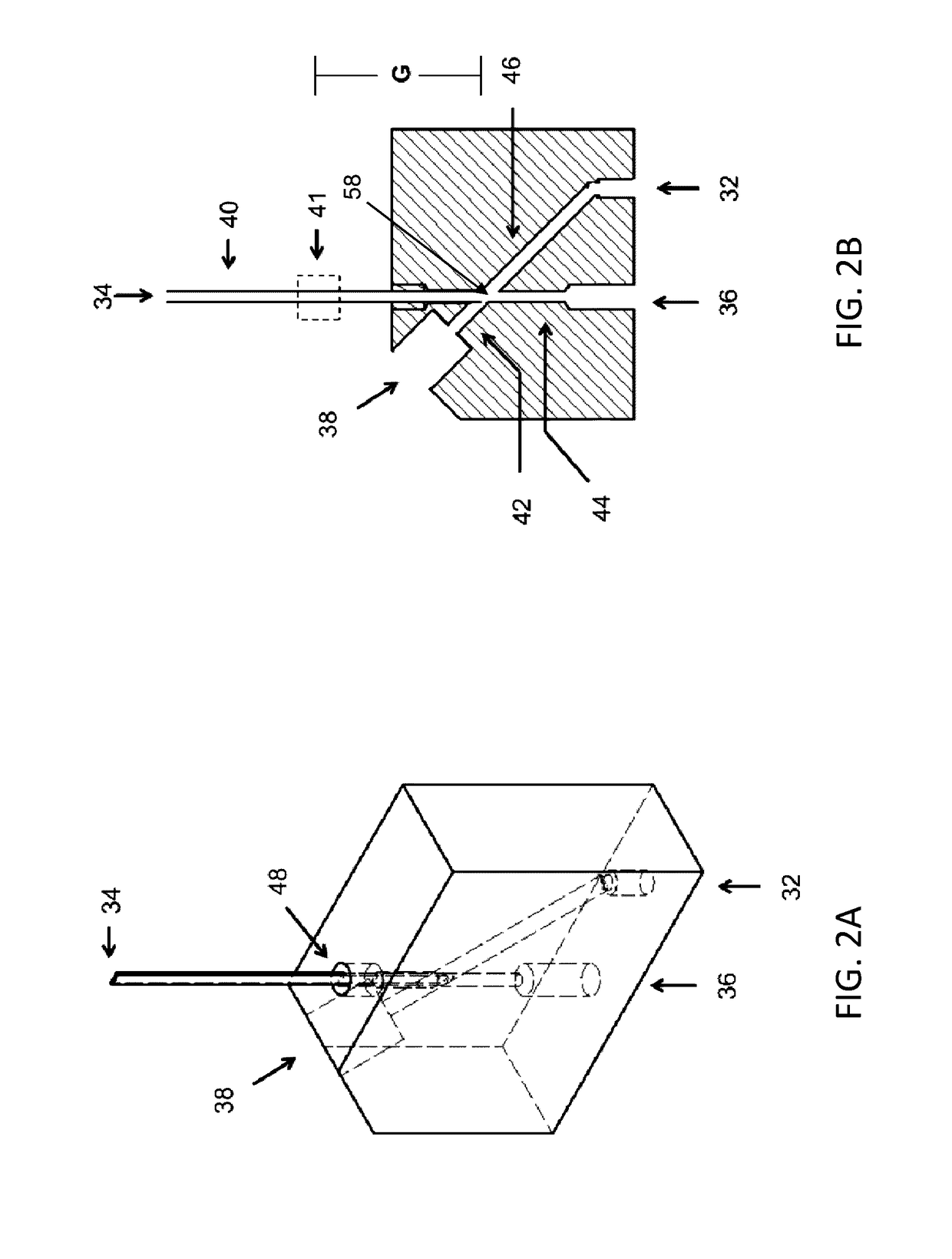Method and apparatus for bulk microparticle sorting using a microfluidic channel
a microfluidic channel and microparticle technology, applied in the field of methods and apparatus for bulk microparticle sorting using a microfluidic channel, can solve the problems of not being able to capture single cells, aiming droplets precisely to an area less than 5 mm in diameter,
- Summary
- Abstract
- Description
- Claims
- Application Information
AI Technical Summary
Benefits of technology
Problems solved by technology
Method used
Image
Examples
Embodiment Construction
[0075]Described herein apparatuses and methods for using microfluidics to sort both groups of separate microparticles and individual microparticles. Also described herein are cartridges that may be used for sorting groups and / or individual microparticles (e.g., cells).
[0076]Although the devices and apparatuses described herein may sort based on flow rate, for example, using a flow switch, in some variations these devices and apparatuses described herein are not limited to the use of flow switches. The majority of the examples described herein are provided in the context of flow switches, but it should be understood that other sorting techniques (e.g., other microfluidic sorting techniques) may be used.
[0077]For example, the majority of the cartridges described herein are microfluidic sorting cartridges for sorting groups of microparticles and / or sorting and isolating individual microparticles, and may include a flow switch. For example, described herein are cartridges for microparti...
PUM
| Property | Measurement | Unit |
|---|---|---|
| diameter | aaaaa | aaaaa |
| speed | aaaaa | aaaaa |
| diameter | aaaaa | aaaaa |
Abstract
Description
Claims
Application Information
 Login to View More
Login to View More - R&D
- Intellectual Property
- Life Sciences
- Materials
- Tech Scout
- Unparalleled Data Quality
- Higher Quality Content
- 60% Fewer Hallucinations
Browse by: Latest US Patents, China's latest patents, Technical Efficacy Thesaurus, Application Domain, Technology Topic, Popular Technical Reports.
© 2025 PatSnap. All rights reserved.Legal|Privacy policy|Modern Slavery Act Transparency Statement|Sitemap|About US| Contact US: help@patsnap.com



